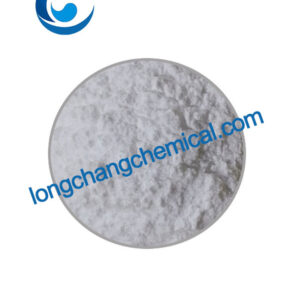Description
hydroxypinacolone retinoate cas 893412-73-2
| Appearance | Yellow powder or crystal |
| Identify | Complies |
| solubility | Does not dissolve in water |
| Residue on ignition | ≤0.1% |
| Heavy metal | ≤20ppm |
| Assay | ≥95.0% |
| Appearance | Yellow powder or crystal |
| Identify | Complies |
Hydroxypinacolone Retinoate Usage
Hydroxy pinacolone retinoate is a retinol derivative with the function of regulating the metabolism of the epidermis and the stratum corneum, which can be used for anti-aging, can reduce seborrhea, lighten epidermal pigmentation, and play a role in preventing skin aging, preventing acne, and whitening and lightening spots. It ensures the powerful effect of retinol while greatly reducing its irritation, and is currently used for anti-aging and prevention of acne flare-ups.
1. Acne removal
2.Anti-wrinkle
3.Brighten skin colour
Additive amount: 0.1 ~ 0.3%
Hydroxypinacolone Retinoate Packaging and Shipping
Packing: G/Aluminum foil bag
Hydroxypinacolone Retinoate Storage
Store in a cool, ventilated warehouse. The storage temperature should not exceed 37 ° C. It should be stored separately from oxidants and edible chemicals, and avoid mixed storage.
Contact Us Now!
If you need Price, please fill in your contact information in the form below, we will usually contact you within 24 hours. You could also email me info@longchangchemical.com during working hours ( 8:30 am to 6:00 pm UTC+8 Mon.~Sat. ) or use the website live chat to get prompt reply.
New Alternatives to Retinol
Hydroxy pinacol copper retinoate, abbreviated HPR, is a novel retinoid derivative. It is formed by esterification of retinoic acid and small molecule pinacol. Unlike other retinoic acid derivatives, HPR retains the efficacy group of retinoic acid and does not need to be converted into retinoic acid, so it can act directly on retinoic acid receptor and play a role, and its effect in anti-aging is similar to that of all-trans retinoic acid. This article will describe some of its advantages in use.
Hydroxy pinacolone retinoate
Gentler.
Scientists compared the effects of multiple vitamin A’s (including HPR, trans retinoic acid, retinol, retinaldehyde, and retinyl palmitate) in terms of anti-aging and irritation in an in vitro model of human skin. This study found that HPR induced weaker inflammation (labelled by IL-1α) than retinoic acid. Cytotoxicity was also lower at a 10-fold concentration. Therefore, HPR is a more stable and milder alternative to retinoic acid and can be used in cosmetics.
More Effective
Anti-wrinkle
Using the hydroxy pinacolone retinoid-containing product, the images of dimple volume, wrinkles and fine lines taken locally from the subjects on days 0 (W0), 14 (W14) and 28 (W28) can be observed that after using the sample containing WL-HPR1130 serum for 2 weeks and 4 weeks, the dimple volume of the corner of the eyes of the subjects, the wrinkles and the fine lines have changed significantly, showing a tendency to decrease.
Promote keratin metabolism
Hydroxypinacolone retinoate (HPR) reduces pores and reduces skin roughness by accelerating keratin metabolism, allowing keratinocytes to differentiate properly, and promoting synthesis of interstitial lipids, which results in smoother, more even skin.
HPR reduces pimples through keratin metabolism, reduces follicular opening blockage and inhibits sebaceous glands from secreting oil, thus reducing acne breakouts and achieving suppression and elimination of skin inflammation. It can also whiten the skin through keratin metabolism, accelerating the discharge of melanocytes and reducing the production of melanocytes.
More stable
Researchers tested the photosensitivity of vitamin A analogues, and of all the vitamin A tested, retinyl palmitate (Rpal) and beta carotene (βcal) were more readily photodegraded, degrading almost completely after a week of light exposure, while hydroxypinacolone retinyl palmitate (HPR) degraded by only 40 per cent after a week. On average, light exposure had the least effect on the stability of HPR of all the vitamin A tested.
In addition, according to the paper’s experimental data, HPR remained very stable in the formulation (essentially unchanged from the initial 95% content) in a simulated long-term stability test (6 months at 25°C and 60% humidity), and in an accelerated stability test (40°C, UV-exposed environment). For several other class A derivatives, significant degradation was shown.
Summary
Hydroxy pinacolone retinoate has a direct effect, which can directly bind to retinoic acid receptor without conversion process and has a fast onset of action; with a small molecular weight, it has the advantage of being more easily absorbed transdermally, low irritation, high activity and high stability, which is not only better in efficacy than traditional retinol, but also better in safety, and has a great potential for application.







Reviews
There are no reviews yet.